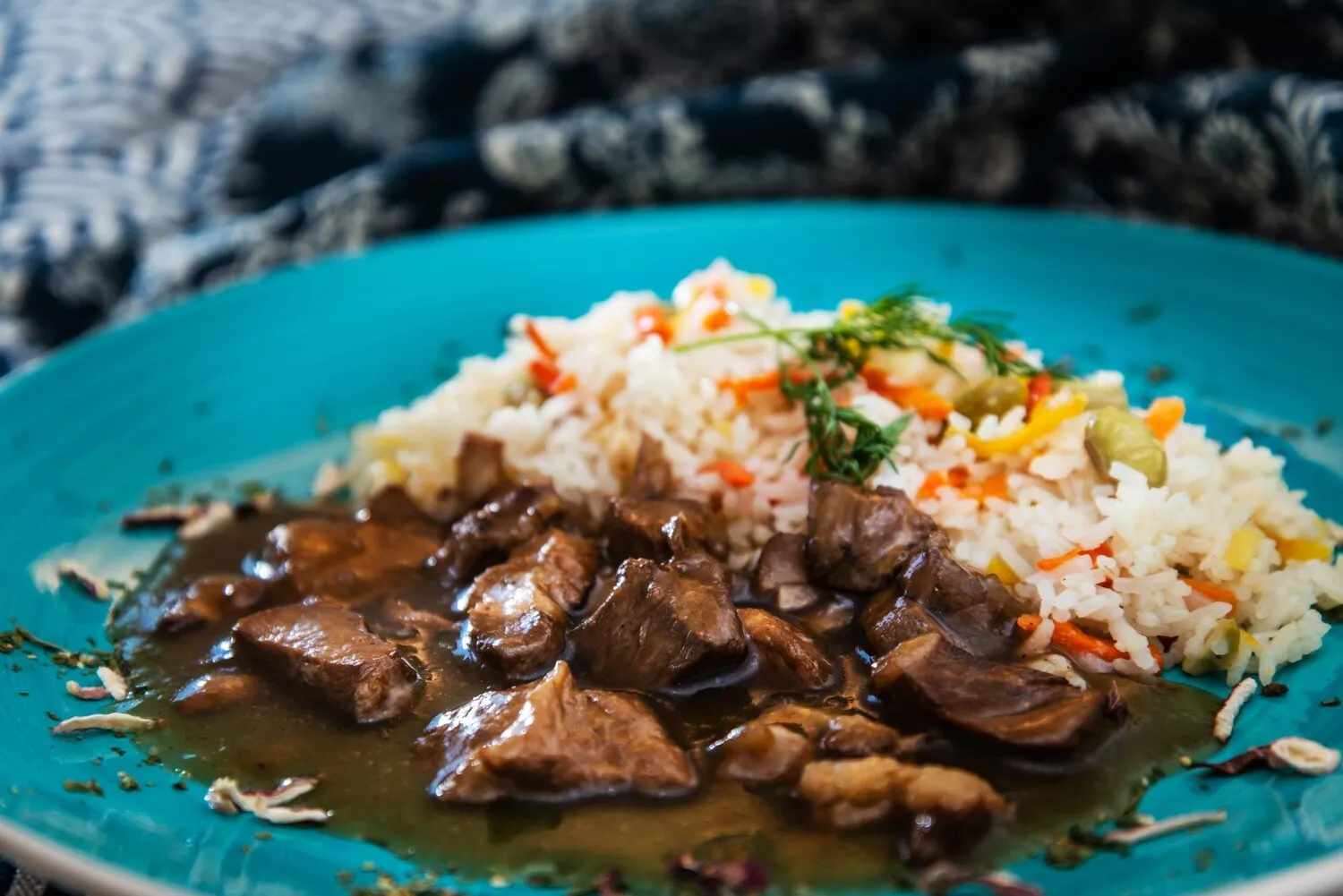
Arroz de Cabidela
Rice cooked in chicken blood, a traditional Portuguese dish.
Nutrition Facts
* The % Daily Value (DV) tells you how much a nutrient in a serving of food contributes to a daily diet. 2,000 calories a day is used for general nutrition advice.
Arroz de Cabidela has roots that can be traced back to Roman times and the utilization of animal blood in cooking. It evolved over centuries, incorporating Portuguese ingredients and culinary techniques, ultimately becoming a cherished dish, particularly in the Minho region of Portugal.
Arroz de Cabidela is more than just a meal; it's a cultural touchstone in Portugal, often associated with special occasions and family gatherings. It represents resourcefulness and the ability to make the most of every part of the animal.
Family Traditions
This dish is frequently prepared for family celebrations and festive meals, especially in rural areas. Passing down the recipe is a family tradition.
Regional Variations
While the core components remain consistent, regional variations exist regarding the specific herbs, spices, and accompaniments used. Each region may have its own unique twist on the dish.
Resourcefulness
Historically, Arroz de Cabidela reflects the value of using all parts of an animal. It embodies the concept of minimizing waste and maximizing available resources.
Arroz de Cabidela presents a unique combination of savory, acidic, and earthy flavors. The chicken provides a rich base, while the vinegar and blood contribute a distinct tang and depth. Herbs and spices add aromatic complexity.
The primary flavor profile hinges on the chicken, cooked until tender, and the use of its blood, which thickens the sauce and imparts a slightly metallic, yet savory, taste. Vinegar, usually white wine vinegar, is crucial for preventing the blood from clotting and adds acidity to balance the richness. Aromatics like onion, garlic, bay leaf, and parsley contribute to the overall flavor profile, creating a complex and satisfying dish. Some variations may include smoked meats for added smokiness.
Blood Handling
The blood must be collected carefully and stirred with vinegar immediately to prevent clotting. Straining the blood before use is also recommended for a smoother texture.
Acid Balance
The amount of vinegar is crucial for achieving the right balance. Start with a small amount and adjust to taste, ensuring it cuts through the richness of the blood and chicken.
Rice Consistency
The rice should be cooked until tender but not mushy. Adjust the liquid levels as needed to achieve the desired consistency. Some prefer a slightly soupy texture.
Gentle Cooking
Cook the chicken slowly and gently to ensure it remains tender and doesn't dry out. Simmering the dish allows the flavors to meld together beautifully.
Explore additional Portuguese dishes and restaurants
Explore PortugueseDiscover top dining spots and culinary experiences in Viseu.
Explore ViseuLearn more about the food culture, restaurant scene, and culinary heritage of Portugal.
Explore Portugal